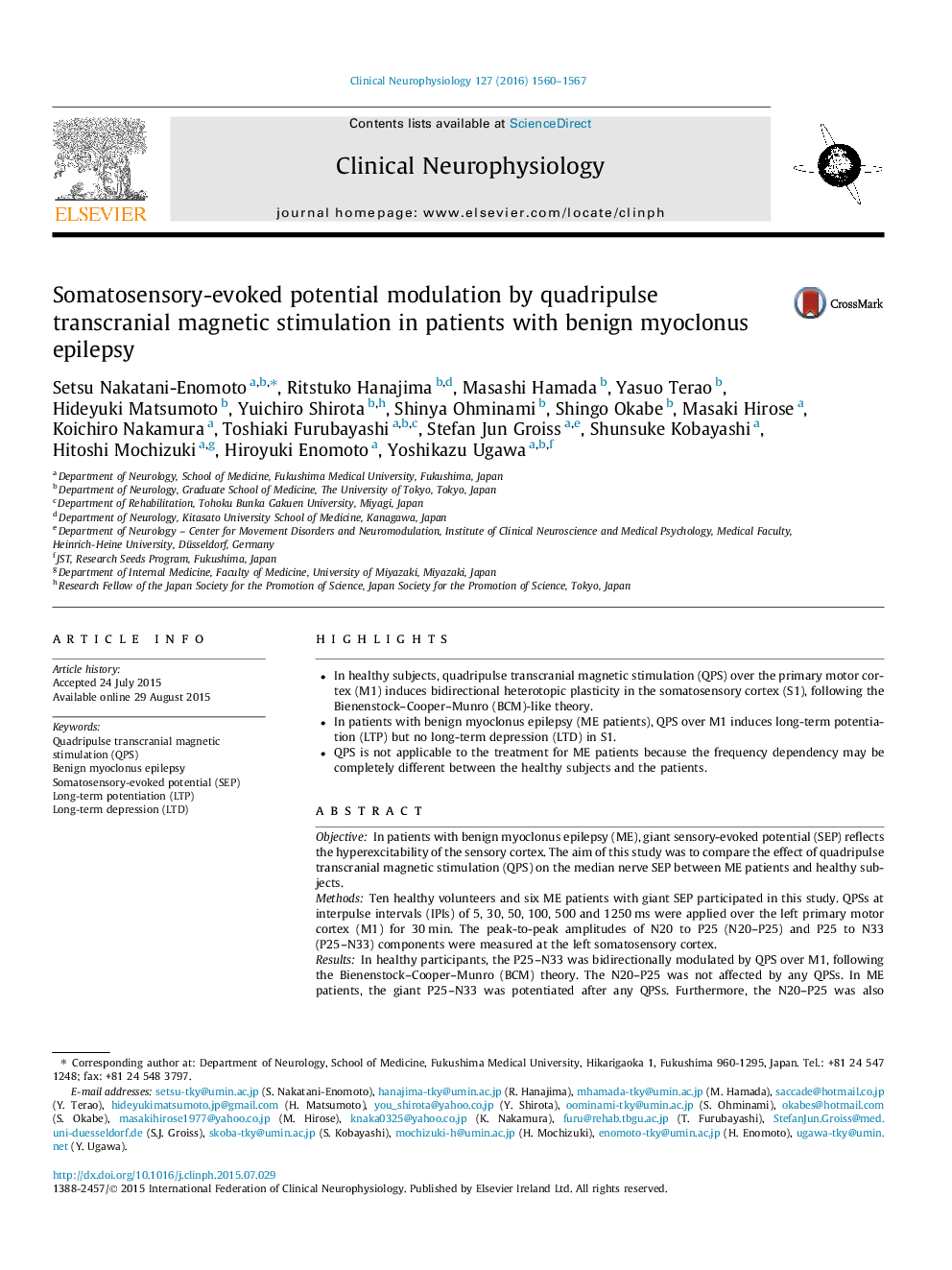| Article ID | Journal | Published Year | Pages | File Type |
|---|---|---|---|---|
| 6007656 | Clinical Neurophysiology | 2016 | 8 Pages |
â¢In healthy subjects, quadripulse transcranial magnetic stimulation (QPS) over the primary motor cortex (M1) induces bidirectional heterotopic plasticity in the somatosensory cortex (S1), following the Bienenstock-Cooper-Munro (BCM)-like theory.â¢In patients with benign myoclonus epilepsy (ME patients), QPS over M1 induces long-term potentiation (LTP) but no long-term depression (LTD) in S1.â¢QPS is not applicable to the treatment for ME patients because the frequency dependency may be completely different between the healthy subjects and the patients.
ObjectiveIn patients with benign myoclonus epilepsy (ME), giant sensory-evoked potential (SEP) reflects the hyperexcitability of the sensory cortex. The aim of this study was to compare the effect of quadripulse transcranial magnetic stimulation (QPS) on the median nerve SEP between ME patients and healthy subjects.MethodsTen healthy volunteers and six ME patients with giant SEP participated in this study. QPSs at interpulse intervals (IPIs) of 5, 30, 50, 100, 500 and 1250Â ms were applied over the left primary motor cortex (M1) for 30Â min. The peak-to-peak amplitudes of N20 to P25 (N20-P25) and P25 to N33 (P25-N33) components were measured at the left somatosensory cortex.ResultsIn healthy participants, the P25-N33 was bidirectionally modulated by QPS over M1, following the Bienenstock-Cooper-Munro (BCM) theory. The N20-P25 was not affected by any QPSs. In ME patients, the giant P25-N33 was potentiated after any QPSs. Furthermore, the N20-P25 was also potentiated after QPS at IPIs of 5, 30, 50 100 or 500Â ms.ConclusionsIn ME patients, the cascade for long-term depression-like effects may be impaired.SignificanceThe giant SEP was furthermore enhanced by QPS.
